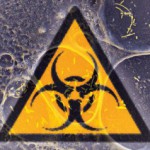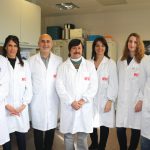Virus comments: Nipah virus, some notes on biosafety and biocontainment.

A few days ago, there was news of some cases of Nipah, a paramyxovirus, which had generated a small outbreak in India area. Nipah, if you check the basic data (you can at this link) is a virus with a mortality rate (in infected patients showing clinical signs) of 40 to 75%, perfectly comparable to the Ebola virus.
Imagine, it is too much to imagine, but, although it is not impossible, that we had some cases of imported Nipah, from travellers, or some nosocomial infection coming from these, in Barcelona. Where would we process the samples for diagnosis by a virus so deadly, but perhaps not particularly transmissible? I proposed a survey at X, before known as Twitter, for people who wanted to answer the following questions.
– Where could they do the initial processing of biological samples obtained from infected people?
– Where would we do the molecular amplification techniques or antibody detection?
– If there were Catalan researchers who wanted (this is an assumption) to do research with Nipah, propagate it and evaluate vaccine prototypes perhaps in animal models, where could they do it?
The options in the three questions are the same and refer to biosafety/biocontainment levels, ranging from BSL1 to BSL4 (maximum containment or biosafety). For more details we can address to any international monograph or guide such as Laboratory Biosafety Manual 3rd Edition, 2004, from the WHO, or in this very good and clear infographic.
The results would be as follows.
For the first question, where we would do the initial treatment of the samples:
– In Biosafety Level 1 27%.
– In BSL2 0%
– In BSL3 40%
– In BSL4 33%.
To the second question, where to do the molecular amplification or antibody detection techniques?
– In a BSL1 27%
– In BSL2 6%
– In BSL3 40%
– In BSL4 27%.
And to the third one, about the possibility of working with infectious viruses, propagating them to study post-exposure treatments and vaccines, the results were…
– In BSL1 22%.
– In BSL2 0%
– In BSL3 34%
– In BSL4 44%
We can say that popular knowledge was not quite right about the handling conditions of Nipah (today it is this one, in a few months it may be another one) and its samples, and now I explain from an authoritative source because…
Let’s go to a reference source… that is the European Centre for Disease Prevention and Control (ECDC).
And from here I extract the part that affects us…

What does the ECDC say? It establishes a gradation depending on WHAT you want to do with material containing Nipah virus.
If we are working with INACTIVATED samples to do immunological tests, an ELISA, for example, or nucleic acid amplification tests, such as an RT-PCR, a BSL2 laboratory, the conventional biosafety of hospital or university microbiology labs, is enough. Working at higher levels, BSL3, would be safer, but it could be a waste of resources because their procedures are not as executive, as fast as those done in BSL2 labs.
But, of course, samples must first be inactivated. Samples that are considered positive for Nipah (whether from people, animal beings, or contaminated objects) would first have to be sent to an BSL3 unit for inactivation in a safer environment for both the operator and the environment and then sent to the BSL2 laboratory, which remember, are “faster”.
All of this is only related, but, to surveillance and diagnostics. We are processing samples and keeping a low profile because we are not MULTIPLYING the virus, here Nipah, we just extract it from the samples, inactivating it at the same time. But what if we want to isolate it (hence multiplication in cell culture), or we want to test any vaccine prototypes involving the use of animal models (we don’t have organoids yet for that). So, we have to raise the bar to the maximum biocontainment level, BSL4 (NBS4 in Catalan), the maximum level because we are going to INCREASE the risk, by increasing the viral titter, and we must MITIGATE this risk, both in the working personnel and in the environment surrounding the laboratory.
Therefore, the correct sequence of answers would be BSL3 to the first question, BSL2 to the second question and BSL4, or CL4, to the third question.
I just want to say that now, in Catalonia, we could only achieve to inactivate the samples (in high biocontainment facilities, ABSL3-Ag, as IRTA-CReSA or few other laboratories) but we could NOT investigate about the infection because there is NO BSL4 available neither in Catalonia, nor in Spain. We would have to go to France, Germany, Switzerland, Sweden or even Hungary.
What will we do if we have a future case of Ebola, or Crimean-Congo hemorrhagic fever virus, or infected with Nipah virus?
This story shall be told.
NB: According to the RD 664/97 on “the protection of workers against risks related to exposure to biological agents at work” (see consolidated law). Hendra and Nipah must be handled at biosafety level 4, BSL4, without exceptions. Are you sure, without no exceptions? And this story shall also be told.













